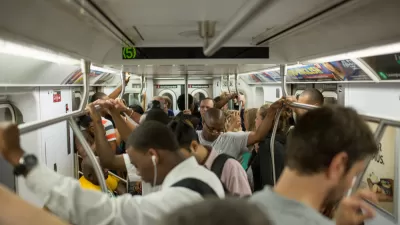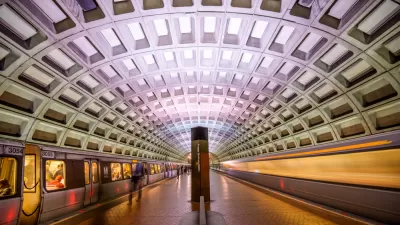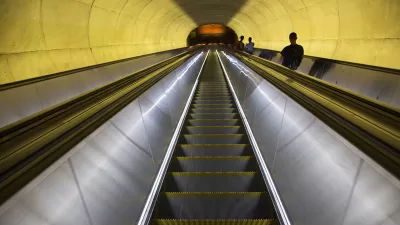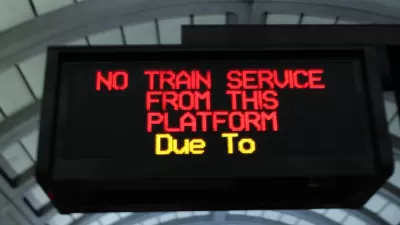Transit commuters in New York and Washington, D.C. were understandably frustrated yesterday. One wonders when enough will be enough, and what happens then?

"At least 37 people were injured Tuesday morning in a subway train derailment in Manhattan," report Paul Berger, Zolan Kanno-Youngs, and Melanie Grayve West for The Wall Street Journal.
"The derailment occurred after the morning rush hour around 9:40 a.m. on an A train traveling between 135th Street and 125th Street stations in Harlem," causing "crippling delays throughout the city’s subway system, affecting at least the A, B, C, D, E and F lines."
The political fallout took a surprising turn throughout the day, as both New York Mayor Bill de Blasio and New York Governor Andrew Cuomo kept the derailment at arm's length—their absence was conspicuous enough to warrant news coverage by Jillian Jorgensen and Aaron Holmes for the New York Daily News. Cuomo and de Blasio are currently in a well documented scrap over control of the MTA—for all the background on that ongoing controversy, start with an article by Amy Plitt that links to a lot more resources on the subject.
Meanwhile in Washington, D.C., there was no derailment to report, but the Red Line ran on a single track for much of the day, and the delays were prodigious. Dana Hedgpeth documented the drama in real time, gathering reactions to the snarled commute from social media and updating the story with reports from Metrorail.
Tuesday's was the second nightmarish transit commute in three weekdays, after two "arcing" incidents on Friday "clobbered" the morning commute. Martine Powers and Rachel Siegel provided reactions to those events by posing a question on the minds of many D.C.-area commuters: what exactly had the year-long maintenance program going by the name SafeTrack accomplished, and would the system's scheduled fare increases (going into effect today, June 25) and reduced services be a death knell for ridership.
FULL STORY: Harlem Subway Derailment Snarls Commute

Study: Maui’s Plan to Convert Vacation Rentals to Long-Term Housing Could Cause Nearly $1 Billion Economic Loss
The plan would reduce visitor accommodation by 25,% resulting in 1,900 jobs lost.

North Texas Transit Leaders Tout Benefits of TOD for Growing Region
At a summit focused on transit-oriented development, policymakers discussed how North Texas’ expanded light rail system can serve as a tool for economic growth.

Why Should We Subsidize Public Transportation?
Many public transit agencies face financial stress due to rising costs, declining fare revenue, and declining subsidies. Transit advocates must provide a strong business case for increasing public transit funding.

How to Make US Trains Faster
Changes to boarding platforms and a switch to electric trains could improve U.S. passenger rail service without the added cost of high-speed rail.

Columbia’s Revitalized ‘Loop’ Is a Hub for Local Entrepreneurs
A focus on small businesses is helping a commercial corridor in Columbia, Missouri thrive.

Invasive Insect Threatens Minnesota’s Ash Forests
The Emerald Ash Borer is a rapidly spreading invasive pest threatening Minnesota’s ash trees, and homeowners are encouraged to plant diverse replacement species, avoid moving ash firewood, and monitor for signs of infestation.
Urban Design for Planners 1: Software Tools
This six-course series explores essential urban design concepts using open source software and equips planners with the tools they need to participate fully in the urban design process.
Planning for Universal Design
Learn the tools for implementing Universal Design in planning regulations.
Ascent Environmental
Borough of Carlisle
Institute for Housing and Urban Development Studies (IHS)
City of Grandview
Harvard GSD Executive Education
Toledo-Lucas County Plan Commissions
Salt Lake City
NYU Wagner Graduate School of Public Service





























